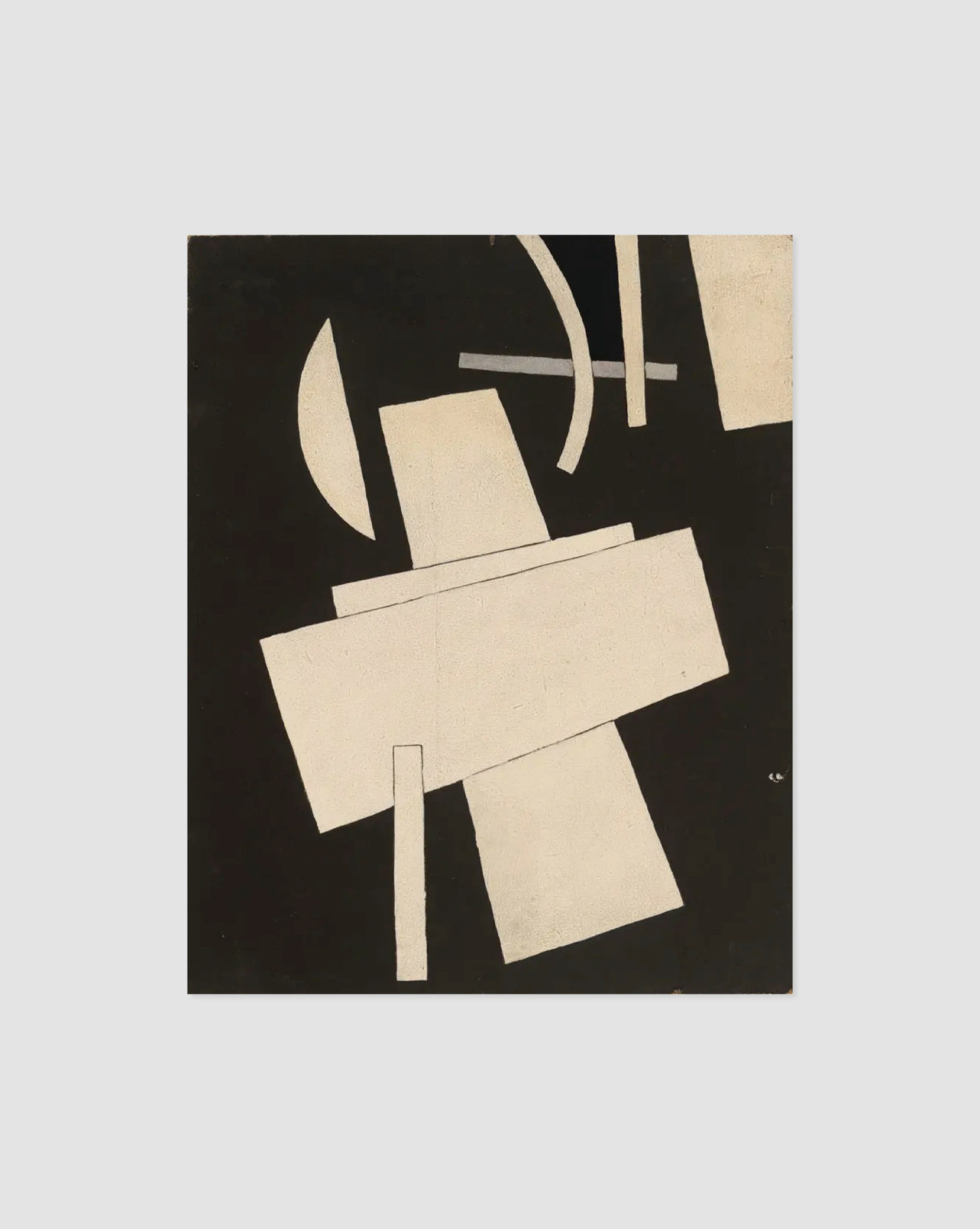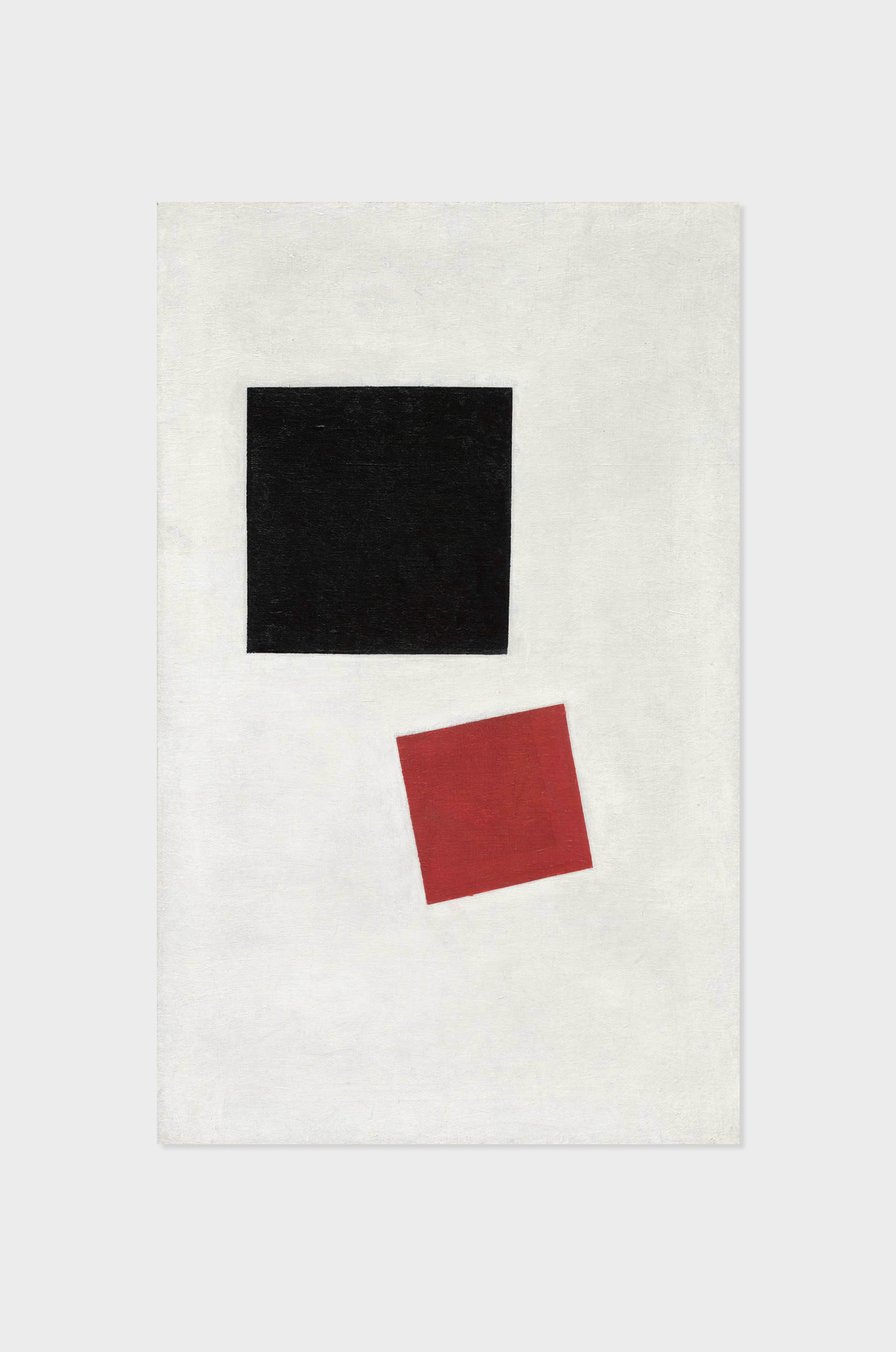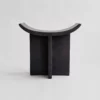Sometimes it only takes one work of art, and everything changes. This was the case in 1915 when Russian artist Kazimir Malevich exhibited his painting “Black Square” – a white canvas with a single, black square in the center. Was he aware that he would leave a lasting mark on the art of the 20th century?
With this and his relentless pursuit of the essence and purity of painting, he founded Suprematism. This new form of painting represents one of the most radical and influential movements in modern art. As the “zero point of painting,” it moved abstraction to the center of artistic debate and opened up a whole new aesthetic.
At the beginning of the 20th century, artists were looking for new forms of artistic expression. They wanted to turn away from traditional painting and free themselves from their obligation to reproduce reality faithfully. They became more abstract and minimalist in their representations. In Futurism and Cubism, however, their abstractions were simplifications of visible objects. This was different in Suprematism. It was consistently the first purely non-representational art movement.1
The Philosophy of Suprematism
Malevich was inspired by various artistic and philosophical movements, among others. The futuristic opera production “Victory over the Sun” by Kruchenych from 1913 played an important role in the birth of Suprematism. The goal of the artists involved was to revolutionize traditional theater and create a “clear, logical, Russian language” 1. Malevich used geometric shapes in costumes and stage sets, and the simplicity of basic geometric shapes was intended to represent a symbolic new beginning.
In 1915 Malevich published a manifesto entitled: “From Cubism to Suprematism – The New Painterly Realism“, in which he set out the foundations of the new movement: the importance of pure geometric forms and colors, relating exclusively to sensory and emotional experience – detached from the physical world. He declared that Suprematism was the highest form of artistic creation because it explored the essence of perception and the inner world, leaving behind the appearance of the external world.
This was followed in December of the same year by the exhibition “0,10”, in which he exhibited his “Black Square”. In this group exhibition, Malevich showed a total of 39 completely abstract paintings composed of basic geometric shapes. The “Black Square,” which he himself described as the “unframed icon of my time,” was hung at the highest point of a corner of the room, tilted slightly downward at an angle – a position usually reserved for a religious icon in a traditional Russian home. This presentation underscored the radical break with traditional notions of art and religious symbolism.


Despite scathing reviews, this was the breakthrough of the new non-objective art form. The exhibition marked a turning point in the understanding of artistic freedom and the possibilities of painting. Since then, “Black Square” has been considered the beginning of a new era in the conception of art.
Suprematism significantly influenced later artistic movements and design approaches such as Constructivism, Abstract Art, and the Bauhaus movement. Constructivism in particular – also a Russian avant-garde movement – had stylistic similarities with Suprematism. Nevertheless, there were enormous differences in the philosophy of the two movements. Yet many artists such as Alexander Rodchenko, Lyubov Popova, and El Lissitzky began their careers in Suprematism and later turned to Constructivist ideas. El Lissizky in particular was deeply impressed by the works and philosophy of the movement and spread the ideas abroad. 1
But artists such as Piet Mondrian and Theo van Doesburg, the founders of the abstract movement De Stijl, were also impressed by the aesthetic of Suprematism. In their works, similar ideals of reduction and geometric composition can be found.
Suprematism can be considered the precursor of Abstract Art in the 20th century. Its philosophy and aesthetic significantly influenced the art world and changed the way artists viewed and represented abstraction, feelings, and sensations. Had Suprematism not existed, the development of other movements, such as Bauhaus and De Stijl, may have been slower or completely different.
Overall, it is difficult to imagine what art in the 20th century would have become without Suprematism, but it is certain that its absence would have had a significant impact on the development of modern art.


